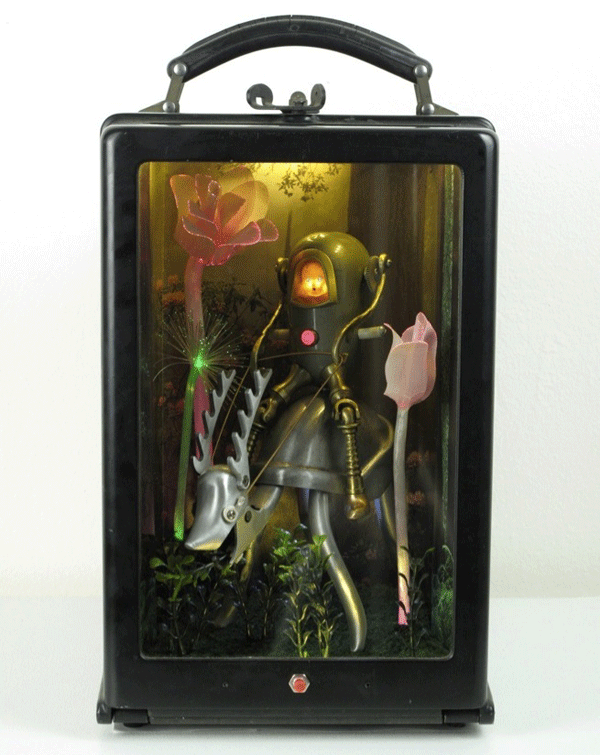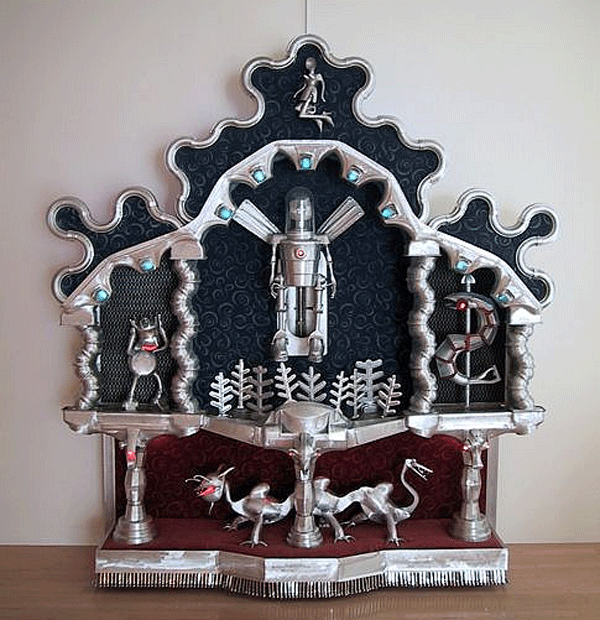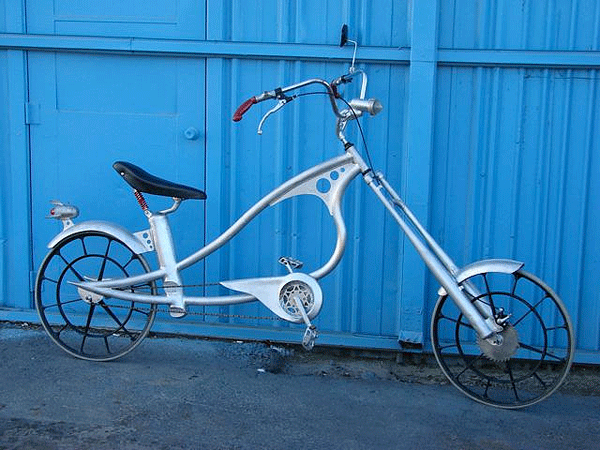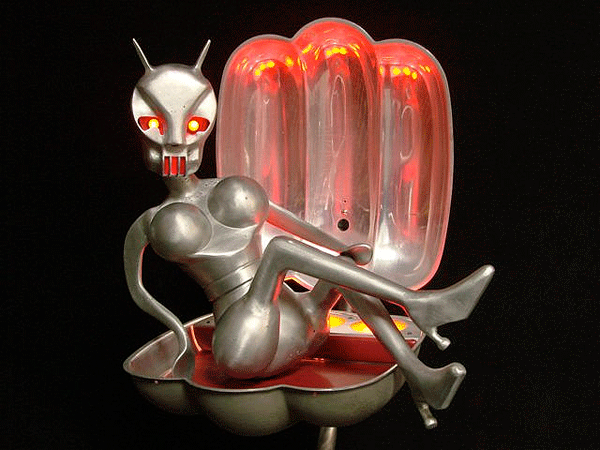

Nemo Gould knows how to make trash look good, real good. As a matter of fact, one look at his portfolio will defy any preconceived notions you may have of what found-object art looks like. Nemo’s eye for clean lines and his playful sense of the fantastic have defined his signature style. In 2007, he was chosen as the Artist in Residence at the San Francisco Dump, a coveted residency among Bay Area found-object artists. When we were looking for someone to chat with about salvage and trash, Nemo instantly came to mind. I’m particularly fond of his artist’s statement:
What makes a thing fascinating is to not completely know it. It is this gap in our understanding that the imagination uses as its canvas. Salvaged material is an ideal medium to make use of this principle. A “found object” is just a familiar thing seen as though for the first time. By maintaining this unbiased view of the objects I collect, I am able to create forms and figures that fascinate and surprise. These sculptures are both familiar and new. Incorporating consumer detritus with my own symbology, they are the synthesis of our manufactured landscape and our tentative place within it — strong and frail at the same time.
1. When did you begin your love affair with trash?
So far back, it’s hard to pin down. I remember my Mom sharing a story of when she took me to the dump when I was something like six or seven. I saw the guys in hard hats pulling salvage out of the pile and I said “I want to work here when I grow up.” Apparently not the sort of ambition that parents look for in young children.

2. What are your favorite salvaging and cleaning tools?
When I’m out hunting, I always have a Leatherman, multi-head screwdriver, and an Allen wrench set with me. Once I get back to the shop, my Roll-In band saw is pretty priceless for quickly harvesting “the good stuff” out of bigger finds. A dual wheel buffer with 3M abrasive discs makes quick work of removing paint, shining up metal, etc.
3. Tell us about your artist residency at the San Francisco Dump. How did you get chosen and what were the highlights of your experience there?
That’s a really terrific program. As soon as I heard about it, I made it my mission to get it. The application process is similar to applying to a school. Artists are chosen based on the portfolio they submit, the project they propose, and the impression that they make in person. This last part is because there is a fair amount of interface with the public involved in being the Artist in Residence.
I can’t really describe the weird joy I got from having free reign over a whole city’s unwanted stuff. Add to that an on-site studio, and it was paradise. For me the real value was the lack of commitment, though. You could drag literally thousands of pounds of stuff back to the studio and then the next day change your mind and throw it all back. In real life you have to either pay rent to store your crap, or pay the dump to take it. Being able to dodge both of those bullets at once is priceless.
4. Do the objects you find dictate the art you make, or do you have a vision of what you want to create and then go out looking for objects to fit it?
Generally speaking the objects define the art. Over the years I’ve learned to simply trust the instinct that draws me to certain things. It can take a while (often years) before I get a clear idea of just why I had to pick up a certain object, but they all wind up being useful eventually. It’s the constant collecting that drives the creativity for me, not particular ideas. I never plan out or draw anything, I just dig around in my bins until something presents itself. The trick is to keep the bins full.
5. Have you ever encountered anything that was too far gone to salvage despite initially getting your attention?
Yes, sadly some treasures really are trash in the end. Usually I’m more strict with larger objects because they clog up my shop. Smaller thingies that are less than perfect stand a better chance of survival.
6. What’s the grossest thing you’ve come across in your salvaging adventures?
That would probably be a toss up between the 50-gallon trash can full of dog poop and the gallon jug of used condoms.

7. What’s the coolest/most unique thing you’ve found?
The best dump score was a complete functional replica of a suit of samurai armor, though that was too cool to make into art.
8. What’s the most unexpected place you’ve salvaged materials from?
I guess what’s most unexpected is the fact that some of the best stuff now finds me. I’m thrilled to have become the guy people call when they don’t know what to do with “that cool thing” that they just can’t justify keeping in their garage anymore. Some mornings I’ll just find things propped against my studio door, with no real idea who left them there.

9. What advice do you have for folks who are just getting into the fine art of working with found materials?
I guess for me the important thing was to feel OK about hoarding stuff without a real specific purpose. Let yourself be drawn to the things that seem to have potential. Stay with it and you’ll find a way to unlock that potential.
10. You’ve been known to “take silly seriously.” How does rummaging and salvage speak to the kid in you?
Well, this kind of behavior started when I was kid. I think the “Aha!” moment was when I discovered that I could remove the screws on my G.I. Joes and make Frankenstein soldiers out of them. From there it was an easy step to add VCR parts to them, and I was on my way. When I’m salvaging now, it’s the same headspace, but with the added thrill of knowing that I’ve got my own machine shop to put my monsters together in.
Thanks so much Nemo! To check out more of Nemo’s work, check out his website and his Flickr stream. And since most of his pieces are kinetic, watch them in action on his YouTube channel.
ADVERTISEMENT






